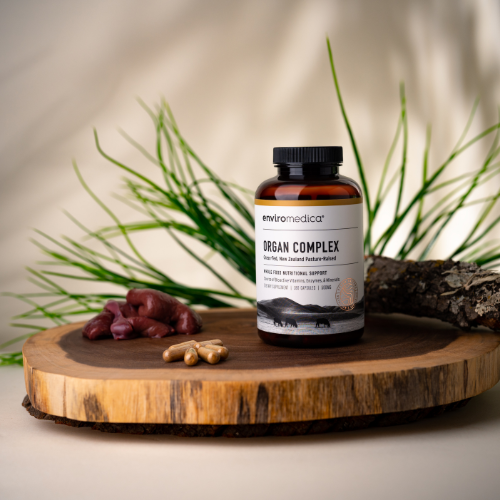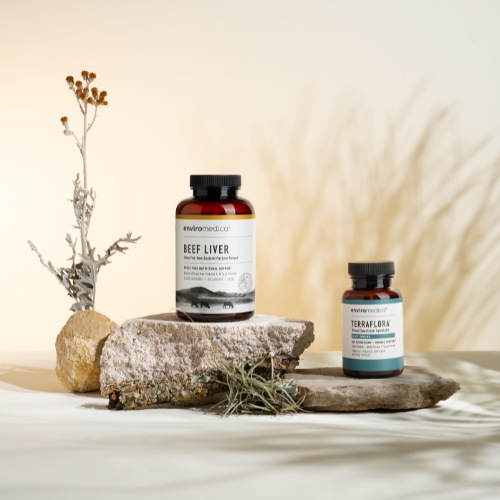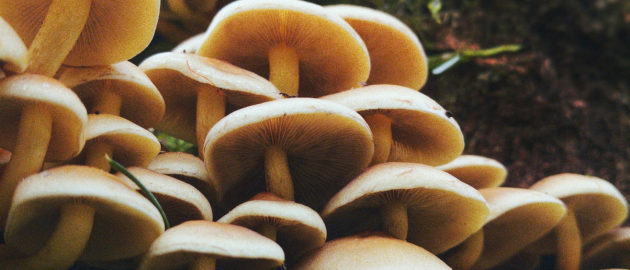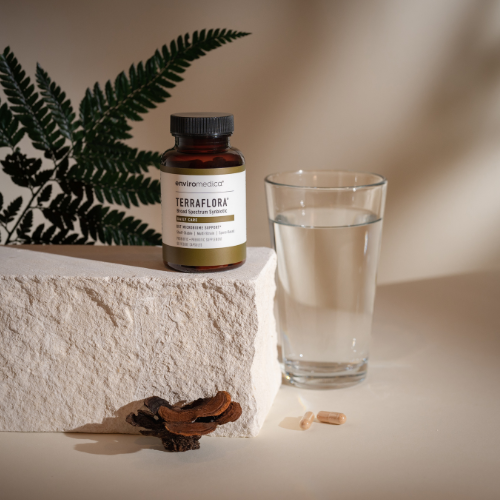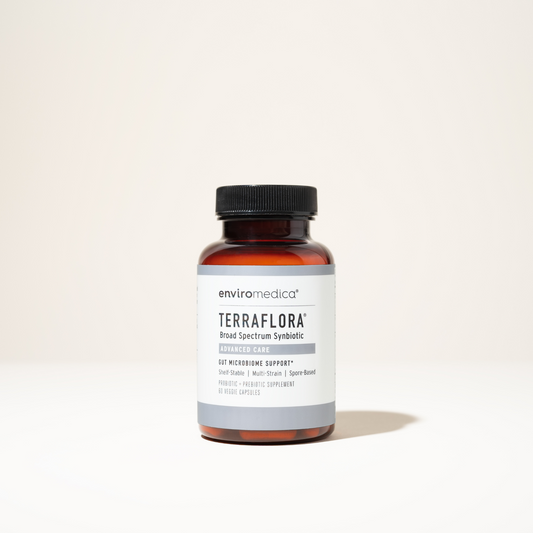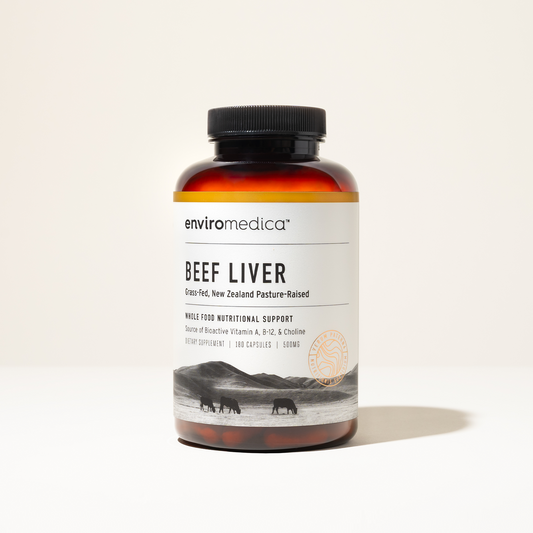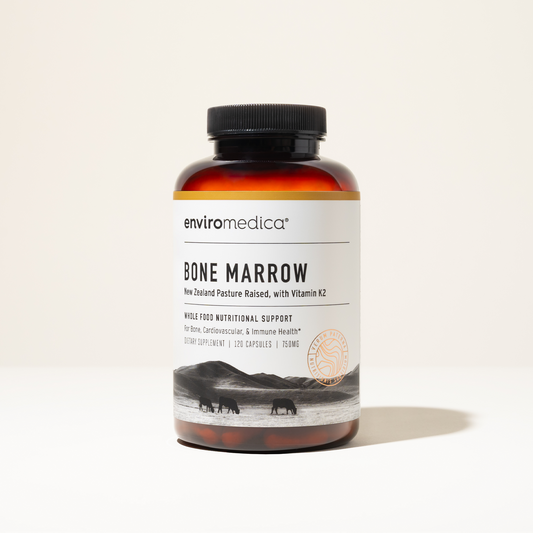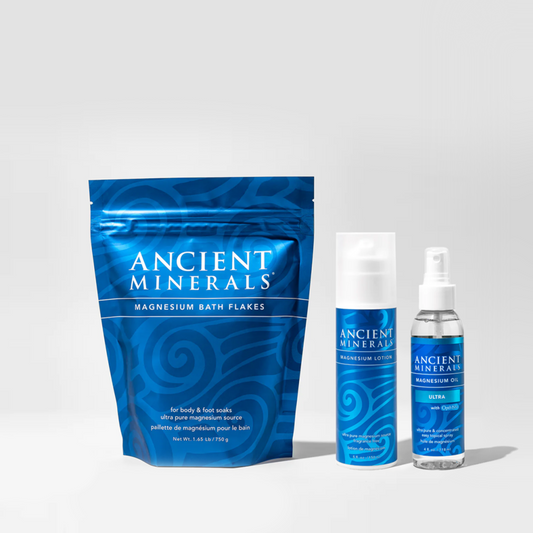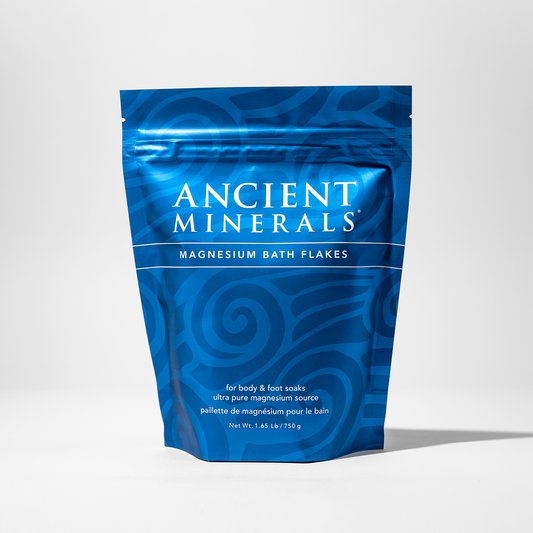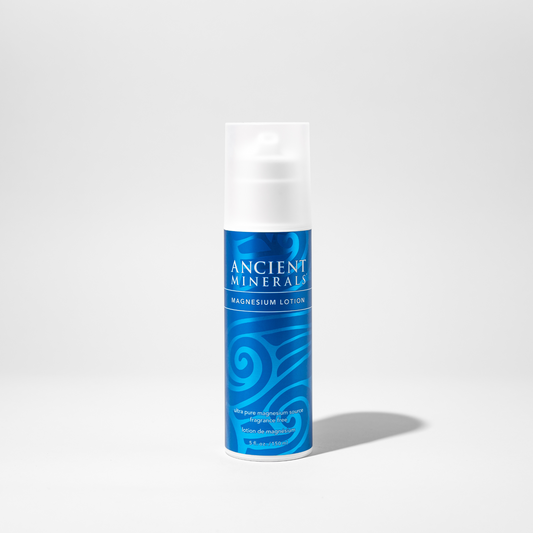Collagen
Collagen is a protein that is integral to the structure and function of human bodies. Structurally, it is the ‘glue’ that holds us together; extra-cellular matrix, joint tissues and cartilage.1 Functionally, the amount of collagen in a body appears to be positively correlated with health. All collagen types (I – XXVIII recognized as of this writing) compromise up to 30% of mammalian protein by mass.2 When the percentage of collagen in the body decreases as a function of diet, lifestyle, and age, the risk of disease increases.
Cartilage has a very interesting and vastly under-appreciated history as a treatment for wound healing, arthritis, autoimmune disease, and conventionally untreatable cancer.3 4 Dr. John Prudden pioneered research and subsequent clinical study on the healing qualities of cartilage supplementation over a decade before Miller and Matukas (1969) recognized it to contain a molecularly distinct form of collagen that we label Type II.5 In other words, while the original work of Dr. Prudden was not informed by the different ‘collagen types’ identified today, he understood through his own experiments and observation that specific cartilage types had unique health restoring properties and aimed to determine more precisely what they were.
The important research of Dr. Prudden and particularly his Cartilage Therapy protocol seem to have largely flown under the conventional medical radar. What is Cartilage Therapy? Why might it be important today? Will it help you to heal your body?
What is Cartilage?
Cartilage is a relatively flexible connective tissue found in joints, the larynx, trachea, spine, rib cage, external ear, and the nose. It is the precursor to the human skeleton, the framework upon which ossification (bone development and growth) takes place.6 Articular cartilage functions to protect joints, enabling smooth, pain-free movement.7 Non-articular cartilage forms a structural framework to enable the proper function of organ systems.
There are several types of cartilage recognized: hyaline cartilage, fibrocartilage, and elastic cartilage. Hyaline cartilage is what the human embryonic skeleton is composed of. It is found inside bone as the center of ossification and it lines the surface of bones where they come together at joints. Fibrocartilage is a tougher cartilage type that characterizes intervertebral disks and places where ligaments and tendons connect to bone. Elastic cartilage is found in the ear and within the larynx. It is comparable to hyaline cartilage but contains elastin, a substance that gives it elastic properties.8
Cartilage is composed of extracellular matrix (ECM) and specialized cells called chondrocytes that secrete, maintain, and repair ECM. ECM itself contains water, collagen (~90-95% of which is Type II in most cartilage), proteoglycans, non-collagenous proteins, and glycoproteins. Chondrocytes are essentially trapped in the ECM where they work locally to repair and maintain it. These cells receive information in a number of ways, they respond to growth factors, mechanical load, piezoelectric forces, and hydrostatic pressures. Their health depends upon an optimal chemical and mechanical environment.
Cartilage has no blood vessels, no nerves, and no lymphatic system.9 As a result, it is widely believed to have limited potential to heal or restructure itself. However, Johnson et al (2004) show that implanting both articular and nonarticular chondrocytes subcutaneously in mice creates new cartilage matrix that functionally bonds to pre-existing cartilage.10 Subsequent to this research, autologous chondrocyte implantation where chondrocytes from a patient’s own cartilage are cultured and reintroduced to the damaged area has been recognized as an effective treatment for cartilage repair.11 Despite these advances, it is clear that primary preservation and maintenance of cartilage is imperative to the optimal structure and function of the human body.
Cartilage collagen is the target of rheumatic disease in the human body.12 Even though nonarticular cartilage (as in the trachea) contains a glycoprotein that is not found in articular cartilage, higher concentrations of this protein are found circulating in patients with rheumatoid arthritis, an autoimmune condition where the body attacks joint tissues. This protein release indicates that while pain symptoms indicate articular issues, nonarticular cartilage is also compromised.13 All cartilage in the body is recognized as cartilage by the body despite its location and discrete function.
The evidence that the body responds systemically to physiological change in cartilage proteins complements the observations and research of Dr. John Prudden, a surgeon and researcher whose early study of cartilage as an effective treatment for healing tissues in the body deserves some re-consideration today.
Dr. John Prudden & Cartilage Therapy
Dr. John Prudden spent nearly half a century studying the healing influence and various modalities of supplemental cartilage on the body. In fact, in 1995, the Cancer Treatment Research Foundation awarded Dr. Prudden the Linus Pauling Scientist of the Year for his achievements in this field of study.
Dr. Prudden’s initial aim was to understand an ‘active principle’ in cartilage for the purpose of creating an accessible cartilage therapy protocol for wound healing.14 15 16 17 18 19 20
Through his experiments, observations, and growing understanding of the healing potential of cartilage, particularly in areas of the body distal to treatment, the focus of his work shifted from wound healing toward healing the body in other ways, namely, from conventionally untreatable cancer.21 22 23
In his earlier experiments, Dr. Prudden digested tracheal cartilage in an acid-pepsin bath and implanted pellets of digested cartilage into rats to test the efficacy of cartilage implants as a treatment for wound healing. The results of this study include significant acceleration in wound healing compared to control.
Results indicated Dr. Prudden that cartilage contains a ‘repair stimulating factor’, that this factor would be water soluble, and that it could potentially be fractionated to create a more potent treatment.24
In his pursuit to advance cartilage therapy, Dr. Prudden developed techniques to process whole bovine tracheal cartilage into both oral supplements and injection therapies, ultimately testing these therapies in human subjects.25 26 27 28 29
Through the course of his research, Dr. Prudden and his colleagues were able to demonstrate that:
- Cartilage treatment accelerates wound healing, particularly in the first three days post-wound30
- Cartilage supplements and injections per his protocol are non-allergenic31
- Cartilage from various animal sources accelerate healing in the body32
- Microscopically, cartilage therapy increases reticulum, fibroblast density, and collagen to the wounded area for an extended period of time dependent on the mode of application and the cartilage particle size (~4-7 months)33 34
- Isotonic saline solution is required to transmit the active compounds in cartilage, distilled water does not do the same35
- A critical healing compound in cartilage is an acid mucopolysaccharide (a glycosaminoglycan including chondroitin sulfate)36
- Wound healing is accelerated by 20% over control when a cartilage preparation is used as a treatment37 38
- Controlled human experiments show that treated wounds have 40% more tensile strength in the same person39
- Cartilage therapy shows promise for dental applications, such as relief for dry socket40
- Saline extract of cartilage may provide relief for psoriasis and atopic dermatitis41
Perhaps the most intriguing study of cartilage therapy Dr. Prudden documented is in a 1985 paper entitled, The Treatment of Human Cancer with Agents Prepared from Bovine Cartilage.42 In this uncontrolled pilot study, Dr. Prudden records the treatment and outcome of the 31 people who adhered to the protocol that were diagnosed with various cancers (glioblastoma multiforme, pancreas, lung, ovary, rectum, prostate, cervix, thyroid).
Importantly, these patients had already attempted conventional therapies with no success. He followed his patients for a decade or more, ultimately observing a 90% response rate with 61% complete response (the absence of detectable cancer). A statistic that would make any oncologist stand up and take notice.
The protocol that he tested was an initial subcutaneous injection of ~2000 ml over several visits and then continuous therapy of ~9 grams/day of bovine tracheal cartilage orally, although, when you read through the case histories you will note the dosage varied from case to case. Throughout the course of treatment there were no toxicities to report. The incredible case histories outlined in this paper show 11 of the 31 patients had a complete response or cure; 8 complete response with relapse; 6 partial response, 3 partial response with relapse, 1 improved response, 1 no change, and 1 progressed.43
Dr. Prudden was able to show that his bovine tracheal cartilage therapy stopped the growth of cancer with continuous supplementation. Importantly, the fact that there were no toxicities during the course of treatment suggests that this therapy is safe and tolerable.
As Dr. Prudden’s study was a pilot experiment, a subsequent Phase II clinical trial by Romano and others (1985) tested bovine tracheal cartilage injections on nine patients with various cancers. One of nine subjects had a complete response.44 The investigators were impressed with the patient who responded and note that Dr. Prudden’s protocol was not followed entirely, speculating that perhaps the additional oral therapy would have changed the outcome. This merits further investigation.
As a result of Dr. Prudden’s success treating patients, bovine tracheal cartilage was studied in vitro for its anti-tumor efficacy in 3 human tumor cell lines and 22 malignant tumor biopsies. High dose, continuous exposure to the digested cartilage formulation proved to be efficacious “against the 8226 human myeloma cell line as well as ovarian, pancreatic, colon, testicular, and sarcoma biopsy specimens”.45
How Can Cartilage Heal the Body?
Simply speaking, cartilage therapy appears to provide the body with the building blocks and/or stimulus for cartilage/collagen production that correlates with health. But scientifically speaking, there are a few more details.
The results of Dr. Prudden’s case study in cartilage therapy as a cancer treatment prompted further study of the immunoregulatory affect that bovine tracheal cartilage preparations have on a body. In vivo (mice) and in vitro experiments using both aqueous extracts of digested bovine trachea and cartilage powder result in enhanced antibody production to a number of T-dependent and T-independent antigens. The mechanism by which antibodies are produced was interpreted to be direct stimulation of B cells “by virtue of its chondroitin sulfate-like content”.46
Not surprisingly, as cartilage itself contains no blood vessels, it contains a number of proteins that actively inhibit vascularization.47 48 49 50 51 52 53 54
These chondrocyte-derived angiogenesis inhibitors include troponin-1, U-995, stem cell factor-2, thrombospondins, and metastatin and are the focus of anti-tumor research.55 56
With respect to wound healing, Dr. Prudden states that the presence of cartilage microparticles increases the turnover of collagen at the site of the wound.57 A recent review of collagen synthesis and wound healing addresses some of the biochemical challenges of nutrient supplementation with respect to collagen synthesis, namely, isolated nutrients don’t appear to directly influence processes at the wound site.58 This is a common story, as individual nutrients fail to add up to the whole food due to co-factors both known and yet unrecognized. Albaugh et al (2017) cite an observation that is common in the study of wound healing, that ‘wound nutrition is essentially whole-body nutrition’.59
Today, we are very likely to be malnourished despite the overabundance (and overconsumption) of food. Our ancestral bodies are lacking the whole-food information required to support our immune systems to heal our bodies.
How Can You Benefit from Cartilage?
It’s more important than ever to make sure your body has the building blocks required to run the chemistry of life. Without an evolutionary perspective, we lack awareness of resources that our bodies seek. And without this perspective, we run the risk of trusting our modern food system to fulfill our biological needs, a system that is abundant in nutrient poor, novel foods that enable disease.
Thankfully, you can benefit from the healing properties of cartilage in a number of ways. You can increase your nutrition game by embarking on nose-to-tail eating as a way to incorporate bits and pieces of cartilage and type II collagen into your diet. Choose to eat meat off the bone rather than ‘boneless’ cuts to consume more of the cartilaginous pieces where the muscle meets the bone. When you’ve cleaned the bones, put them in a pot with some veggies and water to create a nutrient-rich bone broth. Bone broth is great way to get the proteins from cartilage and minerals from bone into your body in a natural ratio.
If you feel that these approaches are not sufficient or if you know that you are unlikely to consume bone broth or unconventional bits, you can supplement with whole, sustainably sourced, undenatured (undamaged by heat or chemicals) bovine tracheal cartilage to provide your body with some of what it’s missing in today’s environment.
Hat-tip to Dr. Prudden.
References
- 1. Deshmukh, S. N., Dive, A. M., Moharil, R. & Munde, P. 2016. Enigmatic insight into collagen. J Oral Maxillofac Pathol, 20, 276-83
- 2. Ricard-Blum, S. 2011. The collagen family. Cold Spring Harb Perspect Biol, 3, a004978
- 3. Prudden, J. F. & Balassa, L. L. 1974. The biological activity of bovine cartilage preparations. Clinical demonstration of their potent anti-inflammatory capacity with supplementary notes on certain relevant fundamental supportive studies. Semin Arthritis Rheum, 3, 287-321.
- 4. Prudden, J. F. 1985. The treatment of human cancer with agents prepared from bovine cartilage. J Biol Response Mod, 4, 551-84
- 5. Miller, E. J. & Matukas, V. J. 1969. Chick cartilage collagen: a new type of alpha 1 chain not present in bone or skin of the species. Proc Natl Acad Sci U S A, 64, 1264-8
- 6. Mackie, E. J., Ahmed, Y. A., Tatarczuch, L., Chen, K. S. & Mirams, M. 2008. Endochondral ossification: how cartilage is converted into bone in the developing skeleton. Int J Biochem Cell Biol, 40, 46-62
- 7. Sophia Fox, A. J., Bedi, A. & Rodeo, S. A. 2009. The basic science of articular cartilage: structure, composition, and function. Sports Health, 1, 461-8
- 8. Parvizi, J. M., Frcs and Kim, G.K. Md 2010. Cartilage-Chapter 39
- 9. Sophia Fox, A. J., Bedi, A. & Rodeo, S. A. 2009. The basic science of articular cartilage: structure, composition, and function. Sports Health, 1, 461-8
- 10. Johnson, T. S., Xu, J. W., Zaporojan, V. V., Mesa, J. M., Weinand, C., Randolph, M. A., Bonassar, L. J., Winograd, J. M. & Yaremchuk, M. J. 2004. Integrative repair of cartilage with articular and nonarticular chondrocytes. Tissue Eng, 10, 1308-15
- 11. Mistry H, C. M., Pink J, Et Al. 2017. Autologous chondrocyte implantation in the knee: systematic review and economic evaluation. . Southampton (UK): NIHR Journals Library
- 12. Cremer, M. A., Rosloniec, E. F. & Kang, A. H. 1998. The cartilage collagens: a review of their structure, organization, and role in the pathogenesis of experimental arthritis in animals and in human rheumatic disease. J Mol Med (Berl), 76, 275-88
- 13. Saxne, T. & Heinegard, D. 1989. Involvement of nonarticular cartilage, as demonstrated by release of a cartilage-specific protein, in rheumatoid arthritis. Arthritis Rheum, 32, 1080-6
- 14. Allen, J. & Prudden, J. F. 1966. Histologic response to a cartilage powder preparation in a controlled human study. Am J Surg, 112, 888-91
- 15. Kriegel, H. 1995. Dr. John Prudden and Bovine Tracheal Cartilage Research. Alternative and Complementary Therapies, 1, 187-190
- 16. Prudden, J. F. 1964. Wound healing produced by cartilage preparations: The enhancement of acceleration, with a report on the use of a cartilage preparation in clinically chronic ulcers and in primarily closed human surgical incisions. Archives of Surgery, 89, 1046-1059
- 17. Prudden, J. F. & Allen, J. 1965. The Clinical Acceleration of Healing With a Cartilage Preparation. JAMA, 192, 352-356
- 18. Prudden, J. F., Gabriel, O. & Allen, B. 1963. The Acceleration of Wound Healing: Use of Parenteral Injections of a Saline Cartilage Extract, with a Note on the Evaluation of Electrophoretically Separated Fractions of the Extract by Tissue Culture. Archives of Surgery, 86, 157-161
- 19. Prudden, J. F., Inoue, T. & Ocampo, L. 1962. Subcutaneous cartilage pellets: Their effect on wound tensile strength. Archives of Surgery, 85, 245-246
- 20. Prudden, J. F., Migel, P., Hanson, P., Friedrich, L. & Balassa, L. 1970. The discovery of a potent pure chemical wound-healing accelerator. Am J Surg, 119, 560-4
- 21. Durie, B. G., Soehnlen, B. & Prudden, J. F. 1985. Antitumor activity of bovine cartilage extract (Catrix-S) in the human tumor stem cell assay. Journal of biological response modifiers, 4, 590
- 22. Prudden, J. F. 1985. The treatment of human cancer with agents prepared from bovine cartilage. J Biol Response Mod, 4, 551-84
- 23. Rosen, J., Sherman, W. T., Prudden, J. F. & Thorbecke, G. J. 1988. Immunoregulatory effects of catrix. Journal of biological response modifiers, 7, 498
- 24. Prudden, J. F., Inoue, T. & Ocampo, L. 1962. Subcutaneous cartilage pellets: Their effect on wound tensile strength. Archives of Surgery, 85, 245-246
- 25. Prudden, J. F., Inoue, T. & Ocampo, L. 1962. Subcutaneous cartilage pellets: Their effect on wound tensile strength. Archives of Surgery, 85, 245-246
- 26. Prudden, J. F. 1964. Wound healing produced by cartilage preparations: The enhancement of acceleration, with a report on the use of a cartilage preparation in clinically chronic ulcers and in primarily closed human surgical incisions. Archives of Surgery, 89, 1046-1059
- 27. Prudden, J. F., Teneick, M. L., Svahn, D. & Frueh, B. 1964. Acceleration of Wound Healing in Various Species by Parenteral Injection of a Saline Extract of Cartilage. J Surg Res, 4, 143-4
- 28. Prudden, J. F. & Allen, J. 1965. The Clinical Acceleration of Healing With a Cartilage Preparation. JAMA, 192, 352-356
- 29. Prudden, J. F. 1985. The treatment of human cancer with agents prepared from bovine cartilage. J Biol Response Mod, 4, 551-84
- 30. Schwartz, M. S., Gump, F. & Prudden, J. F. 1960. The influence of cartilage on the time course of wound healing. Surg Forum, 10, 308-11
- 31. Prudden, J. F. 1964. Wound healing produced by cartilage preparations: The enhancement of acceleration, with a report on the use of a cartilage preparation in clinically chronic ulcers and in primarily closed human surgical incisions. Archives of Surgery, 89, 1046-1059
- 32. Prudden, J. F., Teneick, M. L., Svahn, D. & Frueh, B. 1964. Acceleration of Wound Healing in Various Species by Parenteral Injection of a Saline Extract of Cartilage. J Surg Res, 4, 143-4
- 33. Paulette, R. E. & Prudden, J. F. 1959. Studies on the acceleration of wound healing with cartilage. II. Histologic observations. Surg Gynecol Obstet, 108, 406-8
- 34. Allen, J. & Prudden, J. F. 1966. Histologic response to a cartilage powder preparation in a controlled human study. Am J Surg, 112, 888-91
- 35. Prudden, J. F., Gabriel, O. & Allen, B. 1963. The Acceleration of Wound Healing: Use of Parenteral Injections of a Saline Cartilage Extract, with a Note on the Evaluation of Electrophoretically Separated Fractions of the Extract by Tissue Culture. Archives of Surgery, 86, 157-161
- 36. Prudden, J. F., Gabriel, O. & Allen, B. 1963. The Acceleration of Wound Healing: Use of Parenteral Injections of a Saline Cartilage Extract, with a Note on the Evaluation of Electrophoretically Separated Fractions of the Extract by Tissue Culture. Archives of Surgery, 86, 157-161
- 37. Sabo, J. C. & Enquist, I. F. 1965. Wound-stimulating effect of homologous and heterologous cartilage. Archives of Surgery, 91, 523-525
- 38. Sabo, J. C., Oberlander, L. & Enquist, I. F. 1965. Acceleration of open wound healing by cartilage. Archives of Surgery, 90, 414-417
- 39. Prudden, J. F. & Allen, J. 1965. The Clinical Acceleration of Healing With a Cartilage Preparation. JAMA, 192, 352-356
- 40. Prudden, J. F., Migel, P., Hanson, P., Friedrich, L. & Balassa, L. 1970. The discovery of a potent pure chemical wound-healing accelerator. Am J Surg, 119, 560-4
- 41. Prudden, J. F., Migel, P., Hanson, P., Friedrich, L. & Balassa, L. 1970. The discovery of a potent pure chemical wound-healing accelerator. Am J Surg, 119, 560-4
- 42. Prudden, J. F. 1985. The treatment of human cancer with agents prepared from bovine cartilage. J Biol Response Mod, 4, 551-84
- 43. Prudden, J. F. 1985. The treatment of human cancer with agents prepared from bovine cartilage. J Biol Response Mod, 4, 551-84
- 44. Romano, C. F., Lipton, A., Harvey, H. A., Simmonds, M. A., Romano, P. J. & Imboden, S. L. 1985. A phase II study of Catrix-S in solid tumors. J Biol Response Mod, 4, 585-9
- 45. Durie, B. G., Soehnlen, B. & Prudden, J. F. 1985. Antitumor activity of bovine cartilage extract (Catrix-S) in the human tumor stem cell assay. Journal of biological response modifiers, 4, 590
- 46. Rosen, J., Sherman, W. T., Prudden, J. F. & Thorbecke, G. J. 1988. Immunoregulatory effects of catrix. Journal of biological response modifiers, 7, 498
- 47. Brem, H. & Folkman, J. 1975. Inhibition of tumor angiogenesis mediated by cartilage. J Exp Med, 141, 427-39
- 48. Langer, R., Brem, H., Falterman, K., Klein, M. & Folkman, J. 1976. Isolations of a cartilage factor that inhibits tumor neovascularization. Science, 193, 70-2
- 49. Langer, R., Conn, H., Vacanti, J., Haudenschild, C. & Folkman, J. 1980. Control of tumor growth in animals by infusion of an angiogenesis inhibitor. Proc Natl Acad Sci U S A, 77, 4331-5
- 50. Takigawa, M., Shirai, E., Enomoto, M., Hiraki, Y., Fukuya, M., Suzuki, F., Shiio, T. & Yugari, Y. 1985. Cartilage-derived anti-tumor factor (CATF) inhibits the proliferation of endothelial cells in culture. Cell Biol Int Rep, 9, 619-25
- 51. Moses, M. A., Sudhalter, J. & Langer, R. 1990. Identification of an inhibitor of neovascularization from cartilage. Science, 248, 1408-10
- 52. Moses, M. A., Sudhalter, J. & Langer, R. 1992. Isolation and characterization of an inhibitor of neovascularization from scapular chondrocytes. J Cell Biol, 119, 475-82
- 53. Suzuki, F. 1999. Cartilage-derived growth factor and antitumor factor: past, present, and future studies. Biochem Biophys Res Commun, 259, 1-7
- 54. Moses, M. A., Wiederschain, D., Wu, I., Fernandez, C. A., Ghazizadeh, V., Lane, W. S., Flynn, E., Sytkowski, A., Tao, T. & Langer, R. 1999. Troponin I is present in human cartilage and inhibits angiogenesis. Proc Natl Acad Sci U S A, 96, 2645-50
- 55. Beliveau, R., Gingras, D., Kruger, E. A., Lamy, S., Sirois, P., Simard, B., Sirois, M. G., Tranqui, L., Baffert, F., Beaulieu, E., Dimitriadou, V., Pepin, M. C., Courjal, F., Ricard, I., Poyet, P., Falardeau, P., Figg, W. D. & Dupont, E. 2002. The antiangiogenic agent neovastat (AE-941) inhibits vascular endothelial growth factor-mediated biological effects. Clin Cancer Res, 8, 1242-50
- 56. Kern, B. E., Balcom, J. H., Antoniu, B. A., Warshaw, A. L. & Fernandez-Del Castillo, C. 2003. Troponin I peptide (Glu94-Leu123), a cartilage-derived angiogenesis inhibitor: in vitro and in vivo effects on human endothelial cells and on pancreatic cancer. J Gastrointest Surg, 7, 961-8; discussion 969
- 57. Prudden, J. F., Migel, P., Hanson, P., Friedrich, L. & Balassa, L. 1970. The discovery of a potent pure chemical wound-healing accelerator. Am J Surg, 119, 560-4
- 58. Albaugh, V. L., Mukherjee, K. & Barbul, A. 2017. Proline Precursors and Collagen Synthesis: Biochemical Challenges of Nutrient Supplementation and Wound Healing. J Nutr, 147, 2011-2017
- 59. Thomas, D. R. 2001. Improving outcome of pressure ulcers with nutritional interventions: a review of the evidence. Nutrition, 17, 121-5

